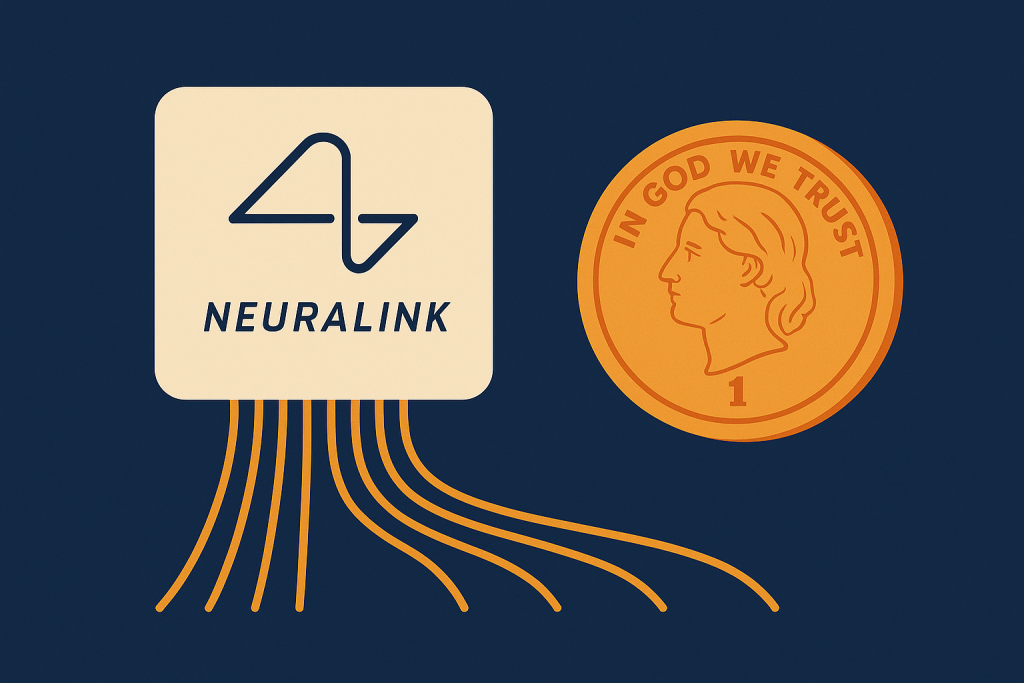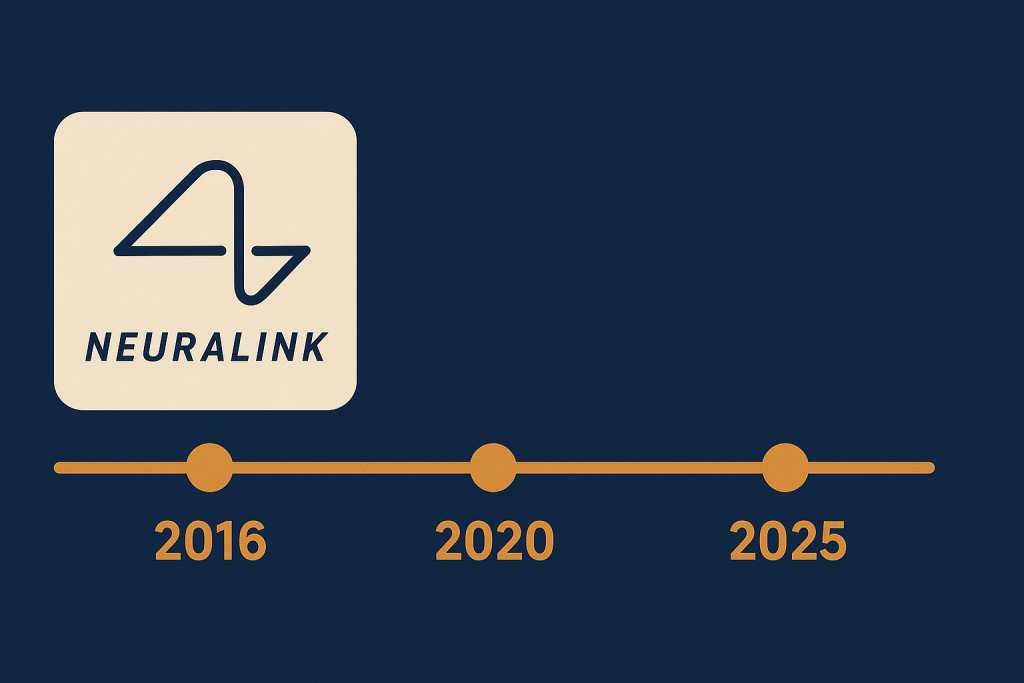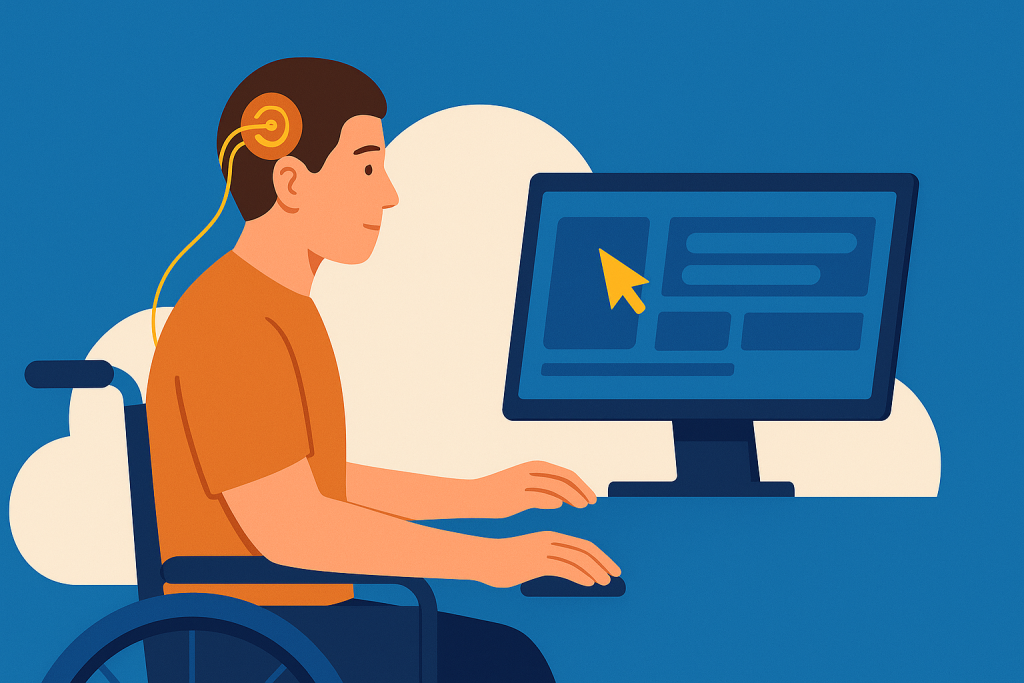Neuralink is one of the boldest bets on the future of human-machine integration. Founded by Elon Musk, the company’s mission is ambitious: create a seamless connection between the human brain and computers. This may sound like science fiction, but it’s quickly becoming science fact. As an innovation in advanced technology, Neuralink could change how we treat disease, communicate, and even experience reality.
Brain-machine interfaces aren’t new—but Neuralink takes it further. It aims to make them not only powerful, but also wireless, upgradable, and eventually widespread. This blog breaks it all down—from how the chip works to what it means for technology trends in healthcare, education, and everyday life.
What is Neuralink?
Neuralink is a brain-computer interface (BCI), sometimes called a neural implant or neuroprosthetic. Its main purpose is to create a two-way communication system between your brain and external devices. This means your thoughts could control a computer, and in the future, information could be sent directly into your brain.
Imagine texting someone just by thinking. Or helping someone who’s lost their ability to speak communicate again. This is a developing hardware and software to make that a reality.
The chip itself is about the size of a coin and gets implanted into the skull. From there, flexible threads—thinner than human hairs—extend into the brain to pick up signals from neurons. Those signals are interpreted and wirelessly transmitted to external devices.
It’s essentially turning thoughts into data—and vice versa.
Breaking Down Neuralink
Let’s walk through how the system actually works.

At the core of the device is the N1 chip. This chip houses important components:
- Electrodes: These pick up signals from your neurons.
- Bluetooth-like transmitter: Sends data wirelessly to a computer or app.
- Battery and charging coil: You charge it wirelessly, like a smartwatch.
- Custom App: Translates signals into commands—like moving a cursor or typing.
What makes Neuralink different from past BCIs is its high bandwidth and minimally invasive design. Traditional systems required large, rigid electrodes and external wires. Neuralink’s threads are flexible and implanted by a surgical robot that reduces the risk of brain damage.
In public demos, Neuralink has shown pigs with implants controlling machines, and more recently, a human subject was able to move a mouse cursor with just their thoughts. These are small steps with massive implications.
History of Neuralink
Neuralink didn’t appear overnight. Its development comes after decades of research into how brains can interact with machines.

The idea dates back to the 1960s, but most projects were stuck in labs and limited in scope. Elon Musk saw an opportunity to push this frontier with commercial ambition and serious funding.
| Year | Milestone |
|---|---|
| 2016 | Neuralink founded by Elon Musk |
| 2017 | Secretive early development begins |
| 2019 | Public demo introduces working chip and robot |
| 2020 | Live pigs with implants show neural data in real time |
| 2023 | FDA approves human trials |
| 2024 | First human Neuralink implant performed |
| 2025 | Human test subject moves cursor using thoughts only |
The long-term goal? Not just assistive tech, but enhancing memory, treating mental illness, and someday merging AI with human cognition.
Types of Neuralink
Neuralink isn’t a one-size-fits-all device. The technology can adapt to different functions depending on the need. Let’s look at some of its main applications.
Medical Neural Interfaces
The most immediate goal of Neuralink is therapeutic. People with paralysis, stroke victims, or those suffering from degenerative diseases like ALS or Parkinson’s could benefit. The chip can bypass damaged neural pathways and restore control over digital devices or even limbs.
Example: A paralyzed person could use the chip to control a wheelchair or smartphone with their mind.
Cognitive Enhancers
Further down the road, Neuralink aims to help healthy people improve memory, focus, and learning. This remains speculative and raises ethical questions, but it’s a real part of their long-term plan.
Example: A student could download complex concepts or languages directly into brain regions associated with memory.
Communication Tools
For individuals who are locked-in—fully conscious but unable to move or speak—Neuralink could offer a lifeline. By mapping thoughts to speech or text, they could communicate for the first time in years.
Example: A person with ALS could “type” on a screen at normal speed without lifting a finger.
Thought-Based Controllers
Neuralink could integrate with smart homes, gaming consoles, or iOT devices. Your thoughts could open a door, dim the lights, or scroll through social media. This could increase accessibility for people with disabilities and convenience for everyone.
Example: Control your home security system or music player using only brain signals.
How Does it Work?
The process starts with the surgery. Neuralink developed a robot capable of inserting the delicate threads into the brain without damaging blood vessels. This surgery takes under two hours and could be done without general anesthesia in the future.

Once implanted, the chip begins reading brain signals. These signals are just electrical impulses fired by neurons. The chip captures them, processes them with AI, and sends the data to a computer or app.
Over time, the system learns what your brain is trying to do. It uses machine learning to decode intentions and convert them into digital commands—like moving a cursor, selecting text, or eventually speaking whole sentences.
The system is also designed to be upgraded, which means future versions could offer more features without needing another brain surgery.
Pros & Cons
While the promise of Neuralink is massive, it comes with real-world risks and concerns. Here’s a quick breakdown:
| Pros | Cons |
|---|---|
| Could restore lost abilities like movement or speech | Requires brain surgery (even if minimally invasive) |
| Offers potential treatment for neurological disorders | Risk of infection or device failure |
| Enables mind-controlled devices for greater accessibility | Ethical concerns around privacy and consent |
| May lead to cognitive enhancement in the future | Still experimental and not widely available |
| Compatible with modern iOT devices for convenience | High cost could limit access |
Uses of Neuralink
Neuralink’s versatility makes it a potential game-changer across multiple sectors. Here’s where it’s already making waves—and where it might go next.
Healthcare and Therapy
This is Neuralink’s most immediate impact. People with spinal injuries, motor neuron diseases, or severe communication disabilities could see life-changing improvements.
Example: A stroke survivor using the device to relearn how to move a limb or form sentences.
Mental Health
Neuralink may eventually treat depression, anxiety, or PTSD by stimulating targeted areas of the brain. It could also help researchers better understand how the brain functions under stress or trauma.
Example: Modulating activity in the prefrontal cortex to treat major depression, without drugs.
Accessibility and Assistive Tech
Neuralink could become a tool for people with physical limitations to navigate the digital world independently.
Example: A blind person navigating a computer interface using auditory or brain-generated cues.
Education and Learning
In theory, Neuralink could accelerate learning by directly interfacing with memory or comprehension centers in the brain. While this is still hypothetical, it’s part of Musk’s vision.
Example: Learning calculus or a new language significantly faster through neural feedback.
Entertainment and Gaming
Neuralink could make immersive virtual reality experiences more interactive and intuitive. Games could respond to emotions or thoughts, and the need for controllers might disappear.
Example: Controlling a virtual character with your thoughts, or experiencing haptic feedback through neural stimulation.
Resources
- CapTechU. How It Works and What It Means
- BuiltIn. What Is Neuralink?
- Online Sciences. Importance, Risks, and What Exactly Does it Do?
- Forbes. Musk’s Quest for Brain-Machine Interfaces
- Webopedia. What’s Neuralink?
